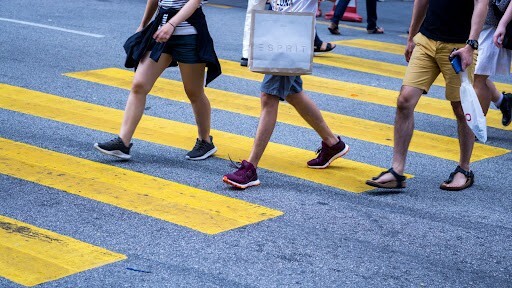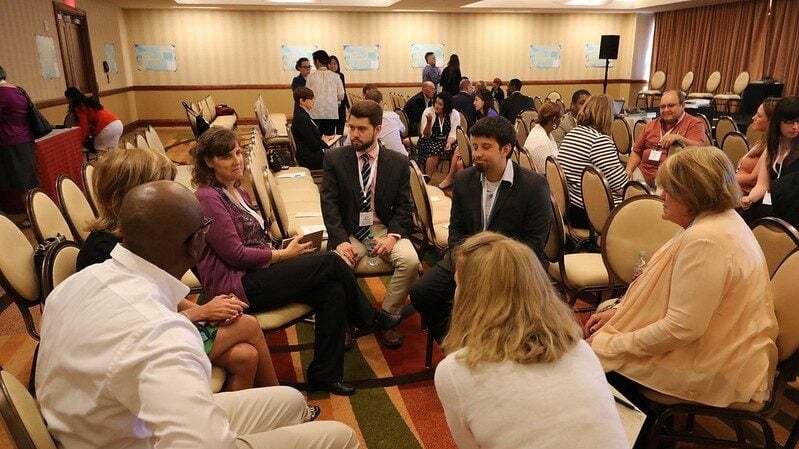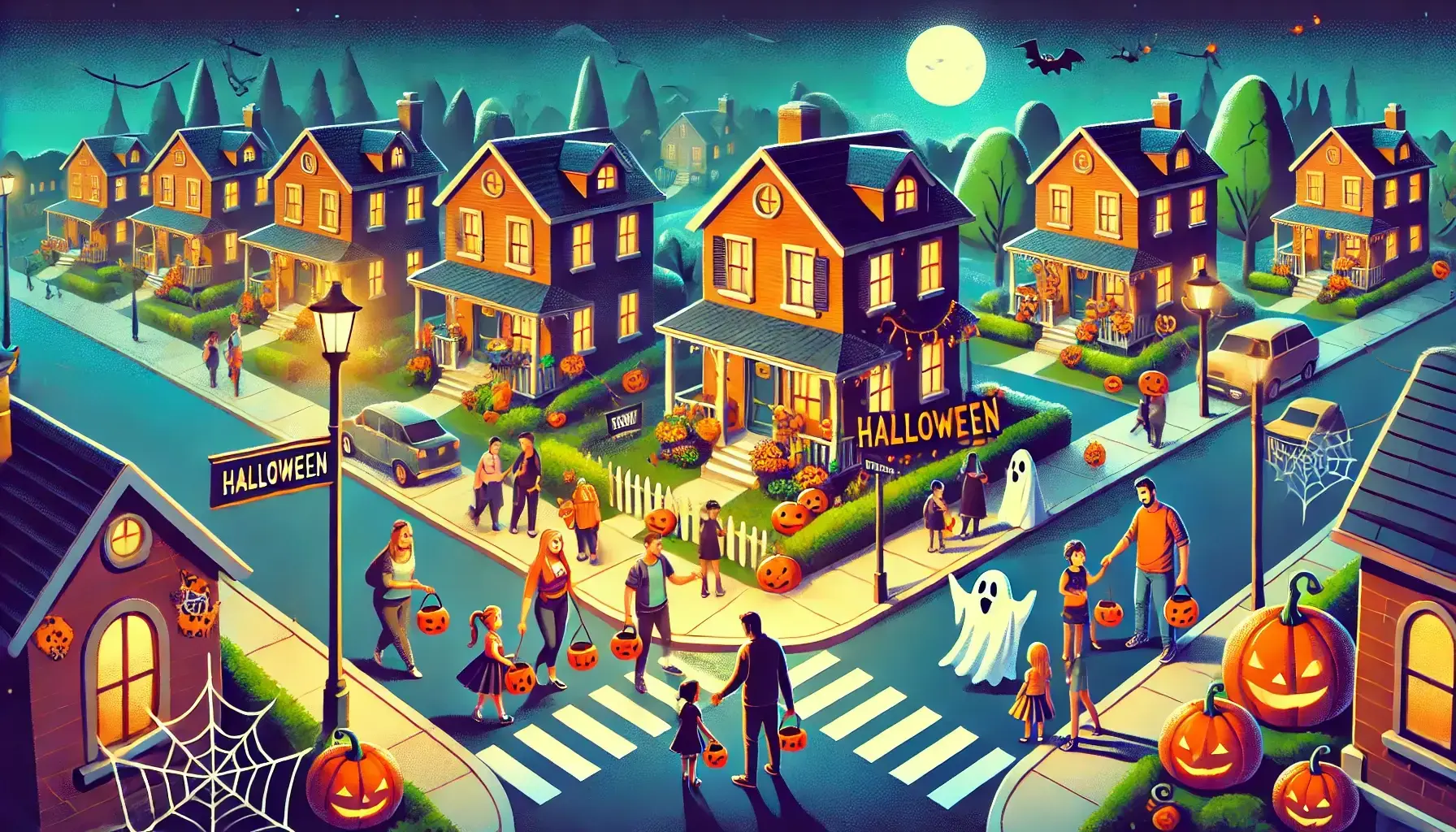How Can Government Leaders Build a More Walkable City?
By Clara Boudette on September 2, 2022

Making cities more walkable can improve overall quality of life.
– By Clara Boudette –
Walkability can improve the character of a community and enhance quality of life. But many places in the US require residents start their ignitions just to travel short distances.
The National Community Survey® (The NCS®) provides resident insights about the state of their county, city, or town. According to The NCS, about 6 in 10 residents rate the ease of walking in their community positively. Places that rank higher in walkability often rank higher in overall livability because of the economic, environmental, and social benefits of walking.
If cities where people can get around on foot are more enjoyable places to live, how can government leaders make life more pedestrian-friendly?

Why do Residents Want Walkable Cities?
Walkable cities include a mix of residential and commercial infrastructure that allow people to work, live, and play in the same area. But there are many surprising benefits of walking besides ease of travel.
Financial
Who knew walking could be good for the economy? Walkability attracts residents to downtown areas. It increases foot traffic and access to stores and restaurants, thus bringing more customers to local businesses.
And According to American City Planner Jeff Speck, author of Walkability City Rules: 101 Steps to Making Better Places, cities with high walkability also tend to have higher property values.
Environmental
The Environmental Protection Agency (EPA) lists the transportation sector as one of the largest contributors to greenhouse gas emissions, responsible for 27% of all emissions. Light-duty vehicles like cars make up more than half (57%) of all transportation related emissions. Walking is a simple, healthy, and cost-effective way to reduce pollution.
Social
In addition to physical benefits, walking can also help residents feel more connected to their community. Spending more time outdoors fosters a greater sense of appreciation for public spaces. Walking more means reducing the need for expanded roadways or parking lots. Space that may otherwise be devoted to cars can instead be used for housing, businesses, or other community projects.
How Cities Can Improve Their Mobility
Some cities are aggressive in their walkability efforts. In Helsinki, Finland, for instance, city planners want to eliminate the need for daily car trips completely by 2050.
Cities don’t need to as far as outlawing cars, but there are a few relatively simple improvements local governments can make to be more walkable.
Invest in Public Transportation
Improving public transportation can positively affect walkability by providing an alternative to car travel. No matter how walker-friendly a community is, some type of motorized transportation is necessary for longer trips. Buses and trains can reduce the amount of car traffic and, in many cases, are a faster and more efficient means of transportation.
Promote Mixed-use Development
Multi-use zoning allows commercial businesses like cafes and shops to exist in the same neighborhood as residential housing. Most suburbs restrict multi-family housing and commercial real estate. They sometimes result in landlocked communities far away from community centers that residents need cars to access.
Rather than driving from their house in the suburbs to a restaurant downtown, and dealing with traffic and parking, residents who live in areas with mixed-use development can walk to restaurants in their own neighborhoods. For some residents, particularly in urban areas, mixed-use zoning combined with efficient public transportation can eliminate the need for a car entirely.
Maintain Sidewalks and Crosswalks
Sidewalks are the heart of walkable cities. They provide residents with an unobstructed area to walk and access to useful areas. When implementing sidewalks, city planners must consider the amount of foot traffic they need to accommodate, the distance from buildings required, and any space needed for services like street lighting and trash cans.
Sidewalks also must be accessible to all residents, not just the able-bodied. They should be level and free of obstructions and adhere to infrastructure standards outlined in the Americans with Disabilities Act.
For sidewalks to increase mobility, they must be safe and maintained. Crosswalks that facilitate safe street crossings, especially in areas with higher speed limits, are also an essential component of walkability. Residents want to be able to easily navigate traffic. Flashing lights, pedestrian crossings, and reduced speed zones help ensure safety in congested areas.
Create More Community Spaces
The pandemic brought to light how valuable outdoor spaces can be.
When social distancing restricted indoor dining, cities around the country blocked off streets so restaurants could expand outdoor seating. Many streets were converted into pedestrian-only areas, and residents liked the change.
In Ann Arbor, Michigan, for instance, 96% of residents voiced their opinion in favor of off-street dining. The City Council passed a resolution to calibrate sections of the city for pedestrian use and make street closures a regular occurrence during the warmer months.
These environments allow residents to grab dinner or drinks and support local businesses while enjoying the downtown area on foot.
Beautify Streets and Architecture
One of the easiest and cheapest ways cities can improve walkability is by making the community more visually appealing. This could look like commissioning a local artist to paint a mural, planting trees and flowers along sidewalks, or cleaning trash and debris from streets. When moving forward in city planning, officials could also consider implementing more aesthetic architecture that can create a unique visual experience in their community.
Learn More
Interested in finding out how your city can improve mobility and transportation? Connect with Polco to learn more about The National Community Survey and gain valuable, data-driven insights into your community.
Related articles
Popular posts
Sign-up for Updates
You May Also Like
These Related Stories

Three Creative Ways Local Govs Used Resident Feedback To Take Action

Top 7 Cities for Trick-or-Treating: A Data-Driven Halloween Adventure


